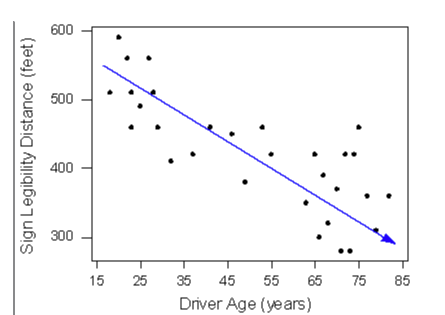9.4 Setting Up a Test for the Slope of a Regression Model
3 min read•june 18, 2024
J
Jed Quiaoit
J
Josh Argo
AP Statistics 📊
265 resourcesSee Units
Just as we had with other units regarding inference, there was always the prediction inference method and the test inference method. Since sections 9.3 and 9.4 dealt with the prediction method (confidence intervals), we will not tackle the testing methods by testing claims about our population.
Recall that we'll model our slopes using a t-distribution. Likewise, previous units illustrated that a t-test is a statistical test that is commonly used to determine whether there is a significant difference between the mean of a sample and a hypothesized value. In the context of a regression model, a t-test for the slope can be used to test the statistical significance of the slope, which represents the relationship between the independent variable (also known as the predictor variable) and the dependent variable. ⛰️
In general, If the t-statistic for the slope is significantly different from zero, it suggests that there is a meaningful relationship between the two variables and that the slope is not equal to zero. On the other hand, if the t-statistic is not significantly different from zero, it suggests that there is not a strong relationship between the variables and that the slope is likely equal to zero.
Hypotheses
The first thing we need to make sure is clear before we perform our test is to set up our null and alternate hypotheses. Since we are performing hypothesis tests on the slope of a regression model, our null and alternate hypothesis will look as according:
- H0: β = β0
- Ha: β =, <, or > β0
(where β0 is the hypothesized value from the null hypothesis)
For example, an Easter candy researcher may claim that the correlation between the number of jelly beans consumed per day and the amount of Easter grass cluttering the house has a slope of 40 ("As the jelly bean consumption increases by 1, the number of easter grass pieces is predicted to increase by 40"). 🐰
If this were the test, you would test it using these hypotheses:
- Ho: β = 40
- Ha: β ≠ 40
Often times with hypothesis test for slopes, we are not testing a null hypothesis, but merely testing that things are correlated. Therefore, our 0 = 0 in that case and we are testing against the fact that our null slope is 0.
Conditions
Just like our other hypothesis tests, we have conditions for the inference that must be met. For hypothesis tests for slope, here are the four necessary conditions: 4️⃣
- Residual plot does not appear to show a pattern for the relationship between x and y
- Standard deviation for y does not vary with x. (Check for no “fanning” on residual plot)
- Independence
- Random sample or random experiment
- 10% condition
- For any particular value of x, the responses for y are normally distributed
- Sample size is at least 30
- Sample data is free of any skewness or outliers
All of these things must be stated explicitly before proceeding to calculate the actual test!

What Test Do I Run?
The test you will run in this instance is a Linear Regression T Test for Slopes. In most graphing calculators, this is known as LinRegTTest under the Stats>Tests menu. 📝
Since we are dealing with quantitative data and it is unlikely we know the population standard deviation of y, we must use a t distribution for our critical value.
Now that we have our test set up…
Let’s go! You have now verified the conditions to be met, wrote your hypotheses and identified the correct test, so we can calculate now! ❤️
🎥 Watch: AP Stats Unit 9 - Inference for Slopes
Browse Study Guides By Unit
👆Unit 1 – Exploring One-Variable Data
✌️Unit 2 – Exploring Two-Variable Data
🔎Unit 3 – Collecting Data
🎲Unit 4 – Probability, Random Variables, & Probability Distributions
📊Unit 5 – Sampling Distributions
⚖️Unit 6 – Proportions
😼Unit 7 – Means
✳️Unit 8 – Chi-Squares
📈Unit 9 – Slopes
✏️Frequently Asked Questions
📚Study Tools
🤔Exam Skills

Fiveable
Resources
© 2025 Fiveable Inc. All rights reserved.